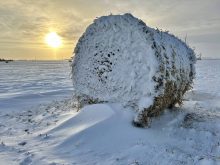CNS Canada — Flooding and excess moisture causing crop damage across southern Manitoba are also creating extreme obstacles for livestock producers now scrambling to find pasture land.
The damage is “pretty well widespread across the whole province,” said Heinz Reimer, president of Manitoba Beef Producers. “In some places guys have totally lost all the pastures, but even where I live here in the southeast, the majority of our pastures have a fair bit of water standing on it.”
These have been the worst years Manitoba has experienced in a while in terms of excessive moisture, Reimer said.
Read Also

Bring focused approach to target systems, not producers says animal activist
Darren Vanstone explains the process of reframing animal agriculture through advocacy and activism at the Human Canada One Health One Welfare Conference.
“I would say, at least from what I’ve heard and talking to people, it’s probably worse than 2011,” he said. “In 2011 it was not across the whole province as it is this year. It seems to be right across from one end to the other.”
Some producers are seeking alternative pasture, but even that is no easy task.
“There are some spaces available, in community pastures,” said Reimer. “Producers should be calling their community pastures and seeing if there is space available and contacting their RMs or Manitoba Beef Producers and we’ll try to see if we can source anything or help them out in any way we can.”
On top of lost pasture space, loss of feed supplies is also an issue, he said.
“Some areas are totally wiped out and other areas the crop is there, but there is water standing so producers aren’t able to go in and harvest it off.”
The first cut of hay would usually be complete this time of year, he said, but wet conditions and excessive precipitation have pushed it back.
“Normally most producers are starting to cut their first cut by the end of June or early in July,” said Reimer. “I was walking to my hayfield last night and I would say I need at least a week of dry weather before I can begin anywhere.”
It remains too early to estimate total losses, but Reimer said some damaged cereal crops might help make up for lost feed.
“Maybe there’s a chance that some of those crops could be utilized as feed because they won’t be worth combining.”
— Marney Blunt writes for Commodity News Service Canada, a Winnipeg company specializing in grain and commodity market reporting.
















